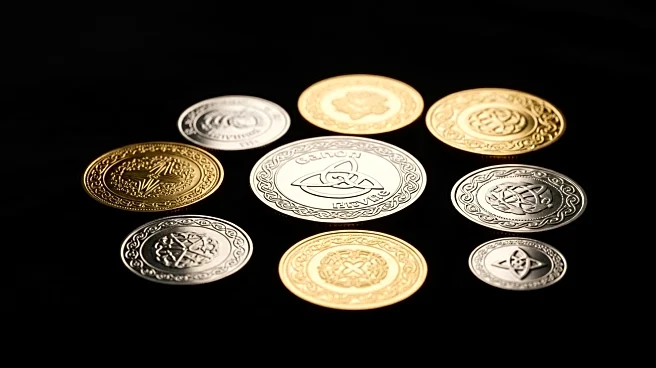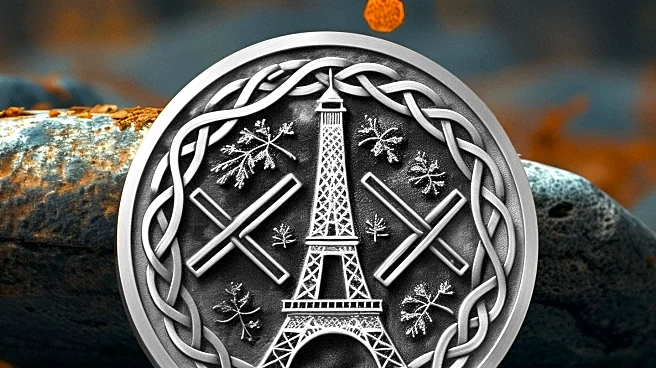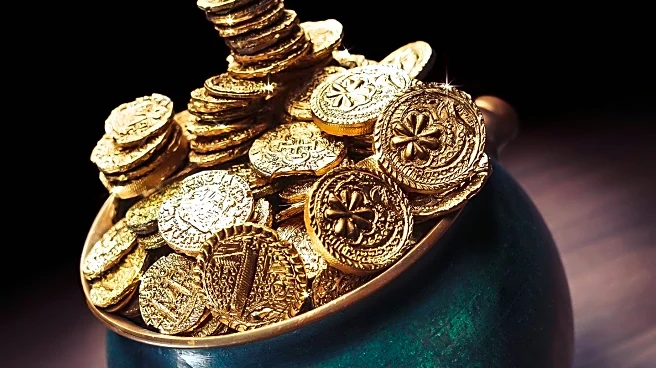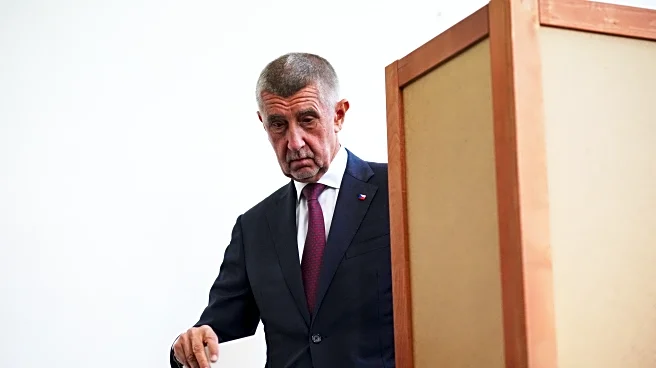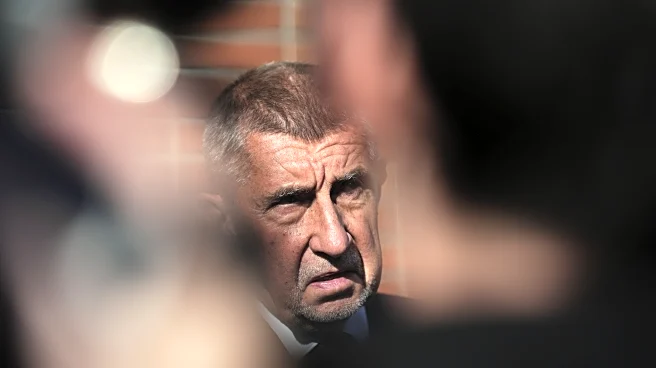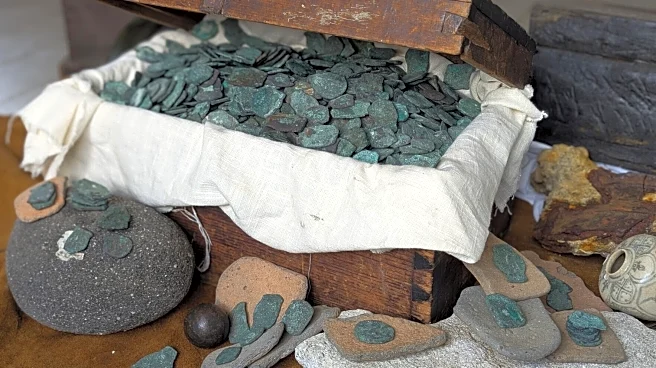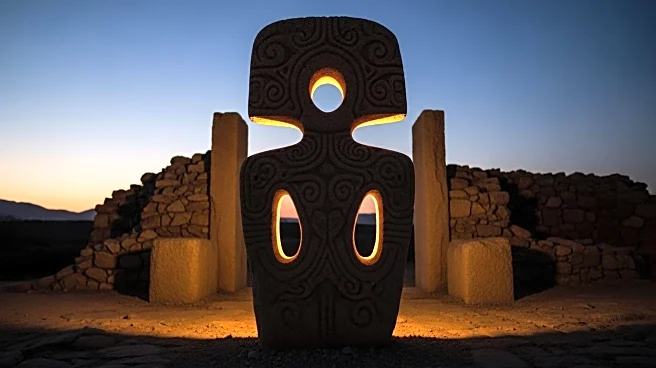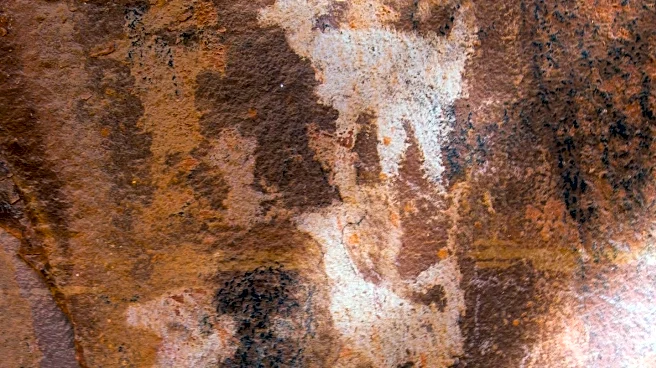What's Happening?
Archaeologists have uncovered a significant hoard of Celtic gold and silver coins at a previously unknown site in the Pilsen Region of the Czech Republic. The discovery, announced by the Museum and Gallery of Northern Pilsen, includes hundreds of coins, a small horse figurine, and bronze clasps. The site, dating back to between the 6th century and 1st century B.C., was not previously known to have been a Celtic settlement, making the find particularly rare. The excavation, led by Jan Mařík of the Archaeological Institute of the Czech Academy of Sciences, aims to protect these artifacts from illegal treasure hunters and natural threats. The coins, some of which are previously unknown types, could reshape the understanding of Celtic coinage in Bohemia.
Why It's Important?
This discovery is significant as it provides new insights into Celtic life and trade in Central Europe. The artifacts offer a rare glimpse into Iron Age settlement patterns and economic activities, potentially altering historical narratives about the region. The find is also crucial for preserving cultural heritage, as it prevents these artifacts from being lost to illegal activities. The coins and other items will contribute to a deeper understanding of Celtic society, trade, and cultural exchanges during the Iron Age. This could benefit historians, archaeologists, and the public by enriching the historical context of the region.
What's Next?
The coins are currently on display at the Museum and Gallery of Northern Pilsen until November 30. The museum plans to conduct further research to fully evaluate the site and its artifacts. There is also consideration for establishing a permanent exhibition to provide a comprehensive view of Celtic life in the region. This ongoing research and public exhibition will likely attract academic interest and tourism, further highlighting the cultural and historical significance of the discovery.
Beyond the Headlines
The discovery underscores the importance of archaeological preservation and the threats posed by illegal treasure hunting. It highlights the ethical responsibility to protect and study historical sites to ensure that cultural heritage is preserved for future generations. The find also raises awareness about the need for legal frameworks and international cooperation to safeguard archaeological sites from exploitation.

